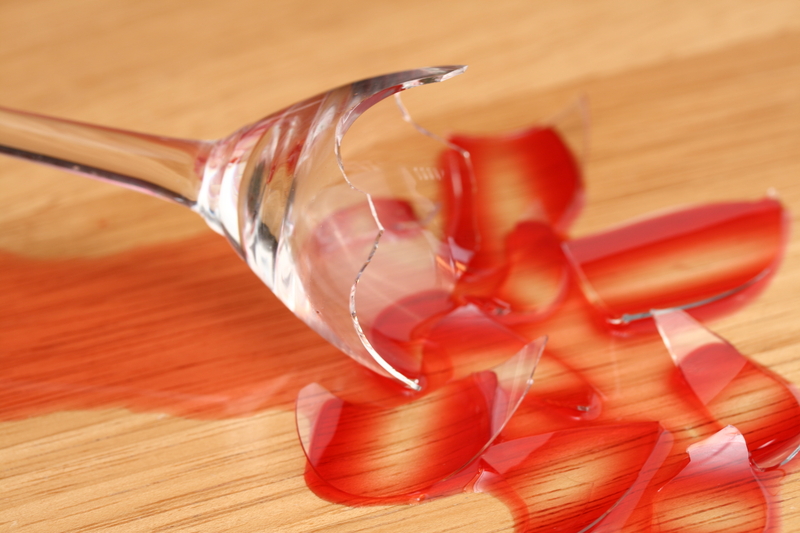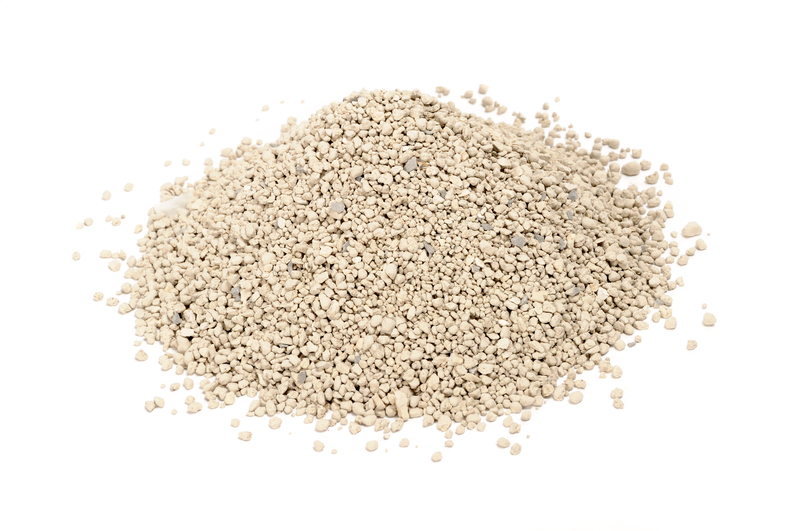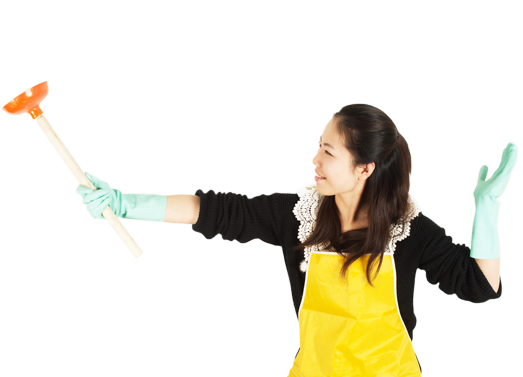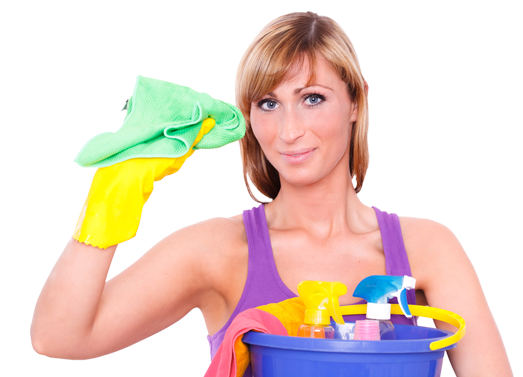Essential Equipment for Carpet Cleaning
Posted on 08/09/2025
Essential Equipment for Carpet Cleaning: An In-Depth Guide
Carpet cleaning is vital for maintaining a hygienic, fresh-smelling, and inviting home or business environment. Investing in the right carpet cleaning equipment not only ensures thorough cleaning but also prolongs the life of your carpets. This comprehensive article explores the essential tools needed for professional and DIY carpet cleaning, their purposes, and tips for choosing the best products for your cleaning needs.

Why the Right Carpet Cleaning Tools Matter
Using basic cleaning techniques may remove surface dirt, but deep-seated grime, allergens, and stains require more advanced methods. The right carpet cleaning equipment enhances efficiency, ensures hygiene, and preserves carpet fibers, offering long-term value. Below, we break down the types of equipment and share practical advice for selecting and using each item.
Types of Carpet Cleaning Equipment You Can't Do Without
1. Vacuum Cleaners
Vacuum cleaners are the foundational tool for regular and thorough carpet maintenance. While there are many styles available, choosing the right one depends on your specific needs:
- Upright Vacuums: Ideal for large areas and deep-pile carpets, these vacuums offer powerful suction and often have height adjustments for different carpet types.
- Canister Vacuums: Designed for maneuverability and versatility, they are perfect for stairs, upholstery, and hard-to-reach corners.
- Robotic Vacuums: Useful for maintenance cleaning, but usually lack the power needed for heavy-duty carpet cleaning.
Tip: Look for vacuum cleaners with HEPA filters to trap allergens and dust mites, ensuring better indoor air quality.
2. Carpet Extractors (Steam Cleaners)
Carpet extractors, also known as steam cleaners, are indispensable for deep cleaning and stain removal. They inject water and cleaning solution deep into carpet fibers and extract dirt, dust, and contaminants with powerful suction.
- Portable Carpet Extractors: Easy to maneuver, suitable for spot treatments and smaller areas.
- Truck-mounted Extractors: Used by professional cleaners for large-scale jobs, offering superior power and faster drying times.
- Heated vs. Non-heated Extractors: Heated machines can tackle greasy stains and heavy-duty cleaning, while non-heated versions are best for delicate carpets.
Pro Tip: Always test the cleaning solution on an inconspicuous area first to avoid discoloration.
3. Carpet Shampooers
Carpet shampooers use a combination of water, cleaning solution, and agitation to lift dirt and stains. They are perfect for high-traffic areas prone to spills and ground-in dirt.
- Choose rotary shampooers for intense scrubbing and deep-cleaning action.
- Opt for models with adjustable brush heights to suit different carpet thicknesses.
Shampooing is especially effective for removing greasy or sticky residues that vacuuming can't handle.
4. Spot Cleaners and Stain Removal Tools
Accidents happen, and when they do, having spot cleaners and specialized tools on hand is crucial for quick, effective stain removal.
- Portable Spot Cleaners: Compact and versatile, these machines tackle spills, pet accidents, and localized stains without requiring a full-scale cleaning.
- Scrub Brushes: Manual or motorized, these help agitate cleaning solutions and can reach deep into carpet fibers.
- Spatulas and Blotting Cloths: Essential for blotting up spills before they set or for lifting sticky debris.
Tip: Always blot, never rub stains, to prevent them from spreading or embedding further into the fibers.
5. Carpet Rakes and Groomers
Carpet rakes or groomers may seem like simple tools, but they play an essential role in the carpet cleaning process.
- They fluff and lift carpet fibers, helping to dislodge dirt before vacuuming.
- After cleaning, carpet rakes restore the pile, leaving carpets looking fresh and newly installed.
Regular grooming prolongs the lifespan of your carpets and boosts their appearance between cleanings.
6. Professional-Grade Cleaning Solutions and Chemicals
An often-overlooked aspect of carpet cleaning equipment is the quality and suitability of cleaning solutions:
- Pre-sprays: Loosen dirt before extraction, ensuring a more effective clean.
- Spot and Stain Removers: Target specific stains such as wine, ink, pet accidents, and grease.
- Odor Neutralizers: Combat unpleasant smells, especially from pets or smoke.
- Anti-Allergen Treatments: Ideal for households with children or asthma sufferers.
Choose eco-friendly and non-toxic chemicals whenever possible to maintain a safe indoor environment.
7. Carpet Dryers and Air Movers
One of the challenges of deep carpet cleaning is lengthy drying times. Carpet dryers and air movers significantly reduce downtime by circulating air and speeding up evaporation.
- Ensures carpets are back in use sooner, minimizing risk of mold and mildew formation.
- Adjustable speeds and angles help target specific areas, addressing under-furniture or corner drying needs.
Tip: Open windows where possible and use dehumidifiers in addition to air movers for ultra-fast drying.
Must-Have Accessories for Superior Carpet Cleaning Results
Carpet Cleaning Wands and Attachments
Specialized attachments for extractors and shampooers increase the flexibility and efficacy of your equipment:
- Upholstery Tools: Designed for cleaning sofas, chairs, and car interiors.
- Crevice Nozzles: Target edges and tight spaces missed by standard machines.
- Power Brushes: Electrically powered for additional agitation on tough stains.
Using the right attachment enhances cleaning results and extends your equipment's utility across various surfaces.
Protective Equipment for Safe Cleaning
Good carpet cleaning practices don't end with machinery. Protect yourself and your floors with:
- Gloves and Eye Protection: Prevent skin and eye contact with potentially harsh chemicals.
- Shoe Covers: Avoid re-soiling cleaned carpets during or after the cleaning process.
- Floor Pads and Furniture Sliders: Prevent wet carpets from staining or being damaged by furniture.
Safety is as important as a sparkling clean carpet--always use appropriate protective gear during any cleaning project.
Comparing Residential vs. Professional Carpet Cleaning Equipment
Understanding the difference between home-use carpet cleaning machines and professional-grade equipment can save you time, effort, and money:
- Residential Cleaning Tools: Typically lightweight, affordable, and easy to use, but may lack power for intensive cleaning or large areas.
- Commercial Equipment: Offers higher suction, larger tanks, and portability for extended use. They're an investment best suited for cleaning services or large spaces.
- Renting vs. Buying: For infrequent, deep cleanings, renting a professional carpet cleaner can be more cost-effective than purchasing high-end equipment.
Pro Tip: Assess the size of your space, frequency of cleaning, and typical stains before deciding which category of equipment suits you best.
Tips for Maintaining Your Carpet Cleaning Tools
1. Clean and Store Equipment Properly
- Empty and rinse tanks after every use to prevent residue buildup and odors.
- Check and replace filters regularly, especially on vacuum cleaners with HEPA filters.
- Inspect hoses, nozzles, and power cords for wear and replace when necessary.
2. Use Recommended Cleaning Solutions
- Use only manufacturer-approved detergents and chemicals to avoid voiding warranties or damaging your machine.
- Mix solutions as directed; excessive concentrations can leave sticky residues that attract more dirt.
3. Regular Servicing
- Schedule annual professional servicing for commercial carpet cleaning equipment to ensure consistent performance.
- Lubricate moving parts when recommended by the manufacturer.
A well-maintained carpet cleaning machine delivers better results, lasts longer, and saves money over time.
Carpet Cleaning Equipment for Special Situations
Dealing with Pet Stains and Allergens
Homes with pets require carpet cleaning tools designed for removing dander, odors, and urine:
- Opt for machines with specialized pet attachments and high-performance suction.
- Use enzyme-based cleaners to break down organic stains and neutralize odors.
Cleaning Delicate or High-End Carpets
Antique, wool, or silk carpets benefit from gentle carpet cleaning equipment:
- Non-heated extractors and soft-bristled brushes reduce risk of fiber or dye damage.
- Always perform a patch test when using new chemicals.
Large-Scale and Commercial Carpet Cleaning
For institutions, offices, or hospitality settings, invest in:
- High-capacity extractors and wide-path vacuum cleaners for faster coverage.
- Industrial air movers for quick turnaround drying between shift changes or hotel stays.

How to Choose the Best Carpet Cleaning Equipment for Your Needs
With so many options available, selecting the right carpet cleaning equipment can be challenging. Consider these key factors:
- Carpet Type: Plush, berber, or shag carpets may each require distinct cleaning approaches and brush types.
- Frequency of Cleaning: High-traffic or pet-prone areas benefit from more robust solutions.
- Ease of Use: Lightweight, ergonomic designs make frequent cleaning easier for homeowners.
- Budget: Invest in quality for essential items like vacuum cleaners and extractors, while supplementing with affordable accessories.
Conclusion: Investing in Essential Carpet Cleaning Equipment
From powerful vacuum cleaners to specialized extractors, essential carpet cleaning equipment makes a noticeable difference in the cleanliness and longevity of your carpets. Whether you're a homeowner, business, or cleaning professional, choosing the right tools enables you to handle dirt, stains, and odors effectively--while maintaining a healthy and appealing environment.
With the knowledge and tools highlighted in this guide, you're equipped to tackle any carpet cleaning challenge with confidence. A clean carpet not only looks beautiful but also supports the well-being of everyone who enters your space.




